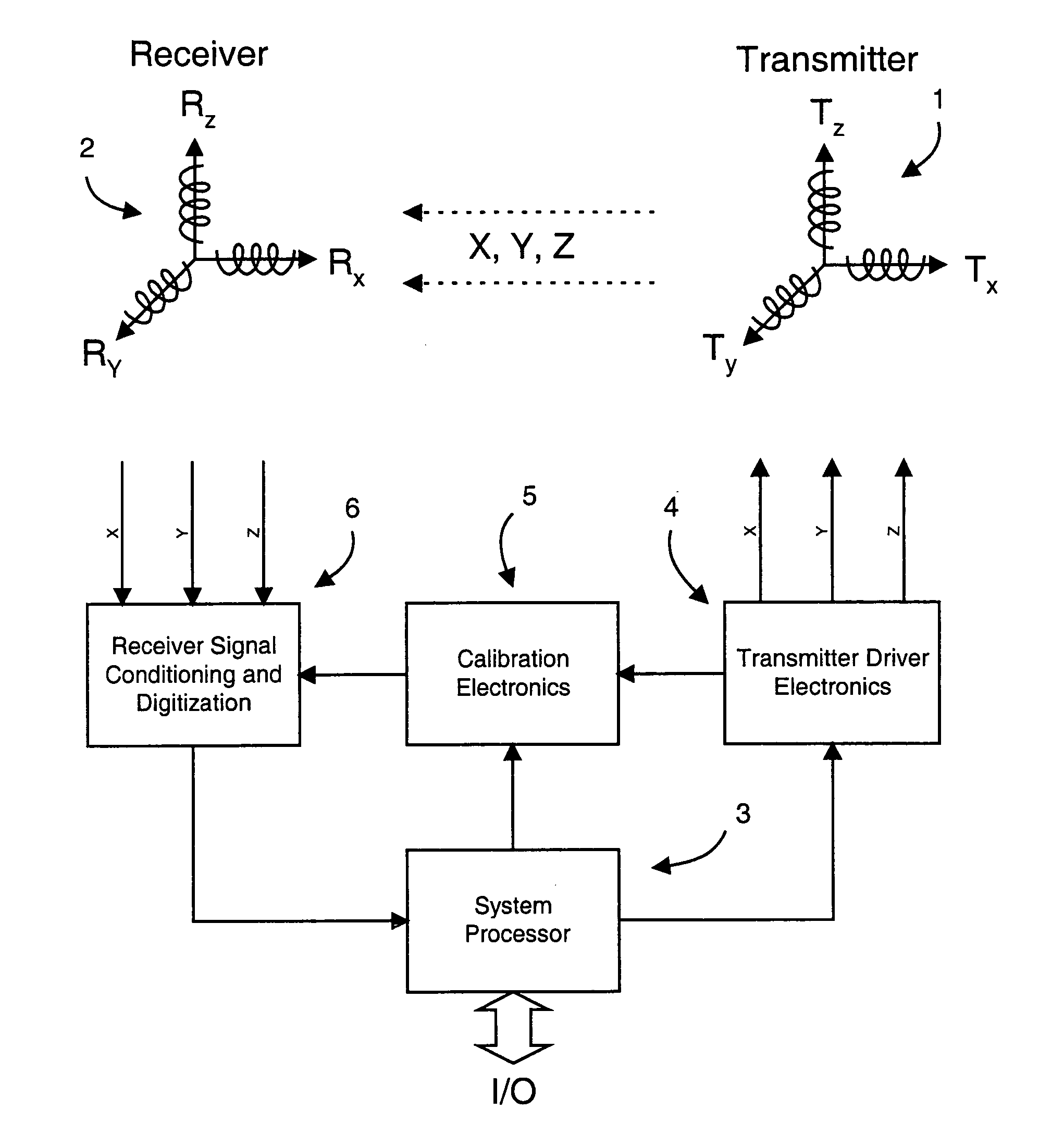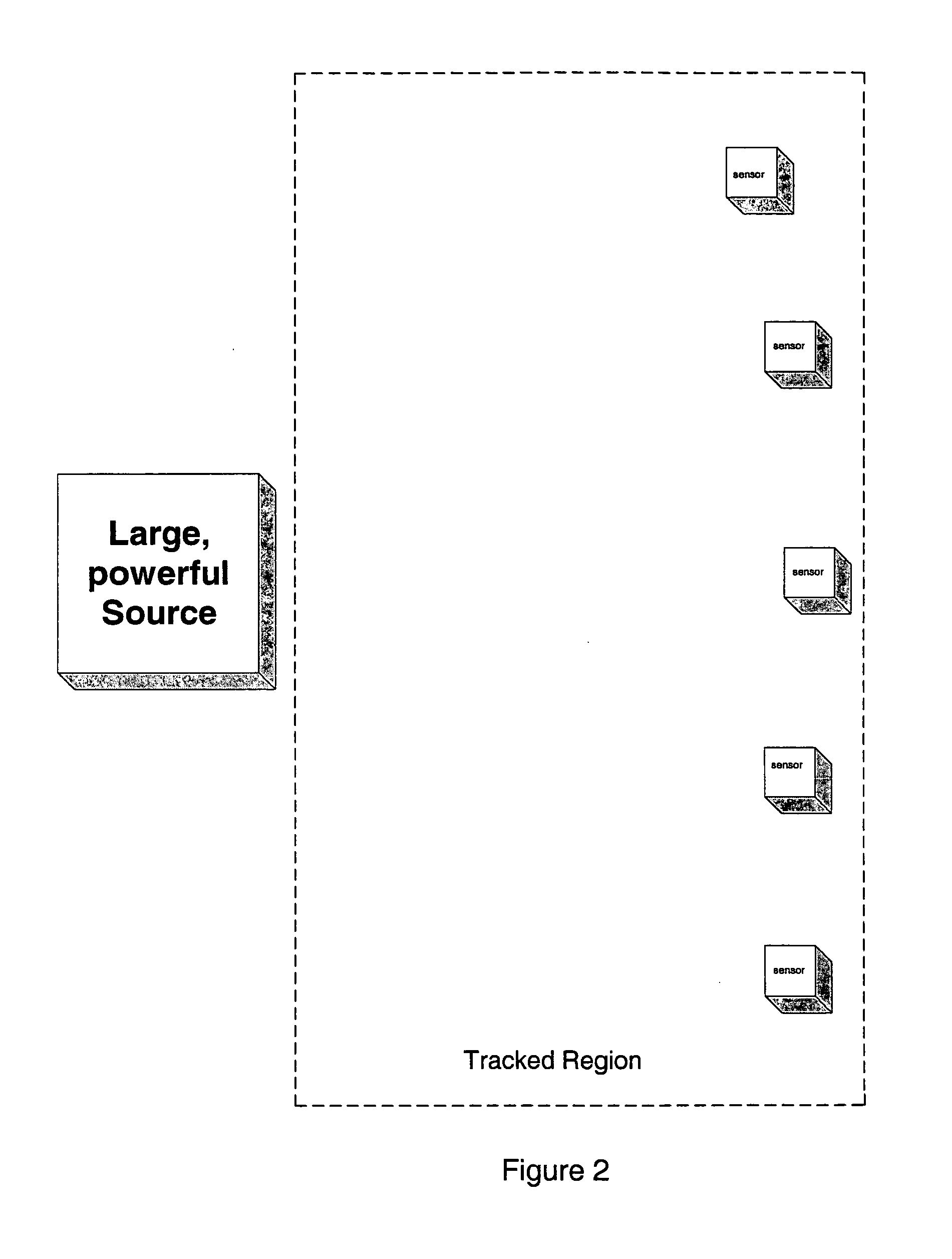Self-training AC magnetic tracking systems to cover large areas
a tracking system and self-training technology, applied in the field of ac magnetic tracking systems, can solve the problems of increasing the source drive in order to increase the operating range without any benefit, causing error signals, and avoiding most field distortion, so as to reduce field distortion and shorten the separation of the source and the sensor
- Summary
- Abstract
- Description
- Claims
- Application Information
AI Technical Summary
Benefits of technology
Problems solved by technology
Method used
Image
Examples
Embodiment Construction
[0054] An important aspect of this invention is to use the tracking system itself to determine P&O in a sequence along any continuous path of a moving “marker” based on the P&O of a beginning, reference position. In this way, the tracking system can report the output as anticipated and needed by the user without confusion and without costly and time-consuming metrology. The approach is applicable to sensor and source learning in conjunction with both outside-in and inside-out structures. By virtue of the invention, the system itself assumes the responsibility of reporting out all tracking data relative to a single reference point.
[0055] In a first example described herein below, we teach the use of a tracking system to learn the source placement configuration and then report subsequent results to the outside world referenced to a particular small field source location. According to a second disclosed example, we teach how signal source markers can be tracked by fixing sensors in pl...
PUM
 Login to View More
Login to View More Abstract
Description
Claims
Application Information
 Login to View More
Login to View More - R&D
- Intellectual Property
- Life Sciences
- Materials
- Tech Scout
- Unparalleled Data Quality
- Higher Quality Content
- 60% Fewer Hallucinations
Browse by: Latest US Patents, China's latest patents, Technical Efficacy Thesaurus, Application Domain, Technology Topic, Popular Technical Reports.
© 2025 PatSnap. All rights reserved.Legal|Privacy policy|Modern Slavery Act Transparency Statement|Sitemap|About US| Contact US: help@patsnap.com



